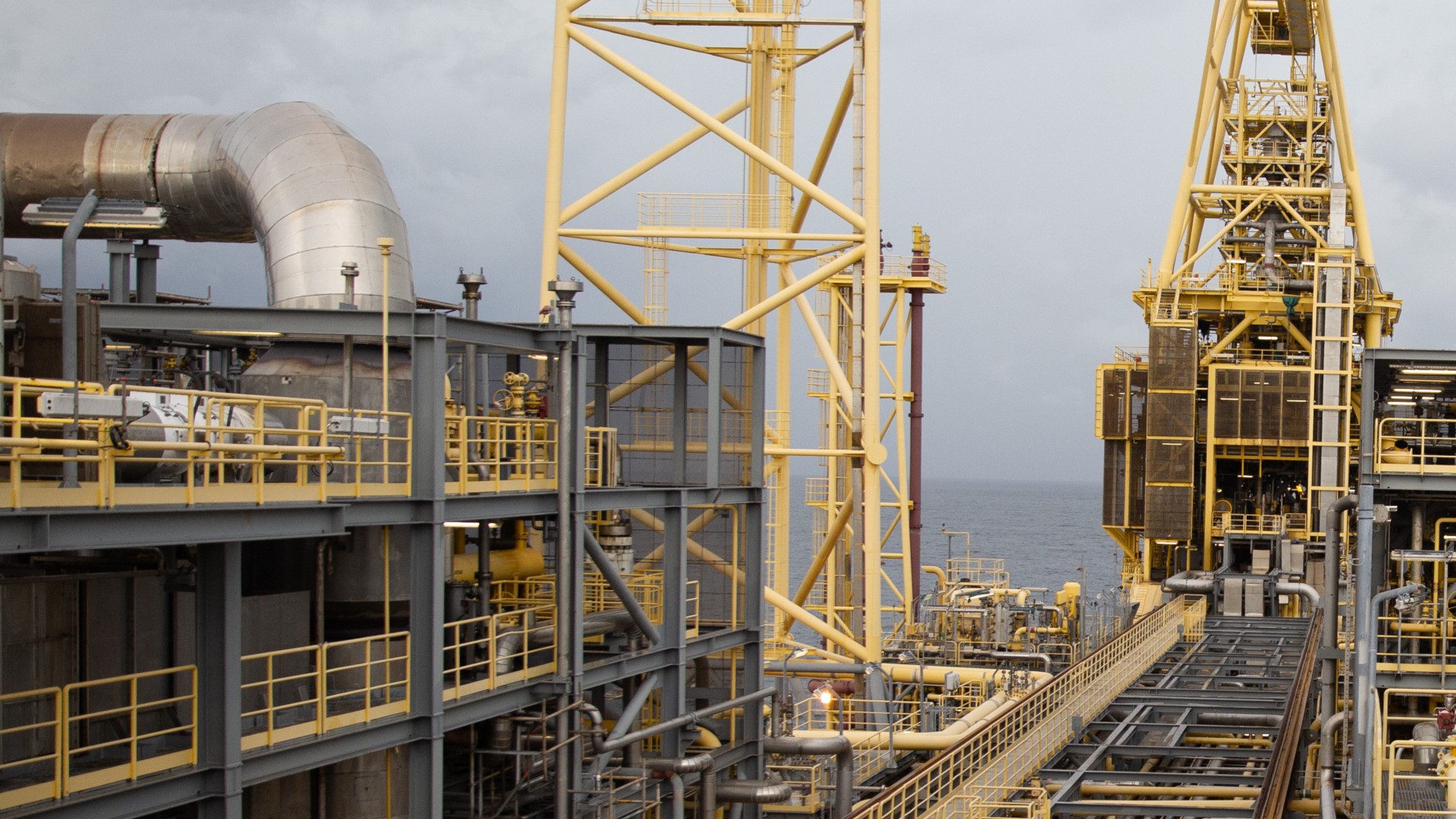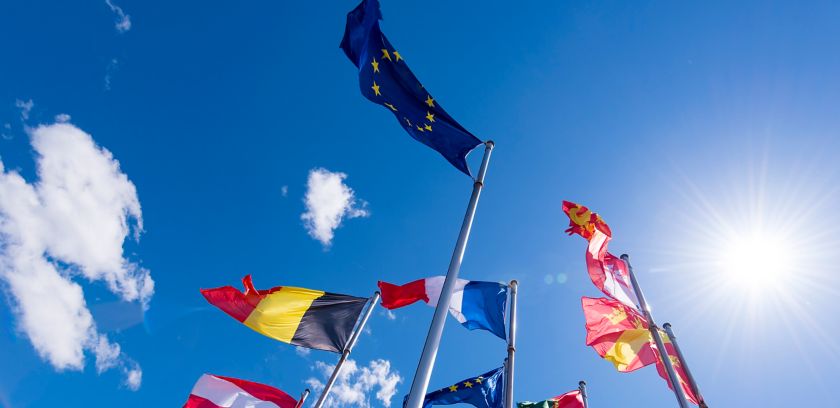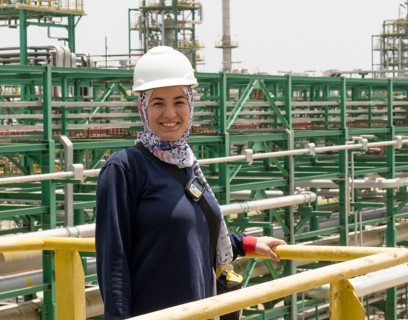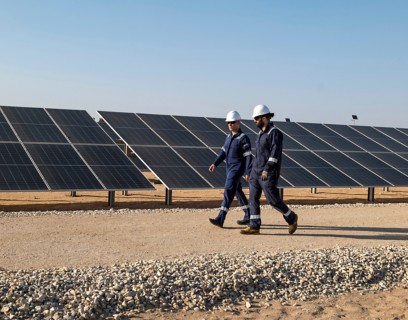
We are committed to progressively reducing emissions from our operations by reducing methane emissions and routine or process flaring and venting, and by investing in energy efficiency. We plan to achieve net zero emissions (Scope 1+2) for the upstream business by 2030 and for all Eni businesses by 2035. Remaining emissions will be voluntarily offset through high quality carbon credits.
The topics presented at COP29, the United Nations Climate Change Conference held in Baku, the capital of Azerbaijan, highlight the global commitment to reducing emissions and implementing the joint initiatives introduced during COP28, to which Eni has committed. We are continuing the implementation of the collaborative actions signed with OGDC (Oil & Gas Decarbonization Charter), GFMR (Global Flaring and Methane Reduction), GGFR (Global Gas Flaring Reduction established at the World Bank) as well as with OGCI (Oil and Gas Climate Initiative).
In addition, our transparent approach in methane emissions reporting has been recognised with through the achievement of the OGMP Gold Standard Reporting (Oil & Gas Methane Partnership 2.0). Furthermore, in 2024 we published Eni's first Methane Report, which reports emission data in line with the initiative's requirements.
We are bringing our experience and commitment to the OGDC by sharing our decarbonization skills and solutions within the energy sector and beyond, to help deliver meaningful GHG emissions reductions.
Francesca Ciardiello
Head of Sustainability at Eni

The first Eni Report dedicated to methane
At the event Turning Methane Pledges into Action event organized by the International Energy Agency (IEA) and the COP29 Presidency as part of the activities connected with the United Nations General Assembly, we presented the first Eni Report dedicated to methane. The report underscores our commitment to transparency and the reduction of global methane emissions, acknowledges the key role that decreasing methane emissions in the Oil & Gas sector can play in combating climate change and details Eni's actions to lower methane emissions across all its operations, as well as how we share this experience with other industry operators.
Eni’s actions to reduce methane emissions across its operations.
Targeting Net Zero emissions Scope 1+2
Actions to reduce methane and flaring emissions and investments in energy efficiency are part of our operations’ decarbonization strategy, which sets Net Zero emissions targets in the short and medium term. We expect to achieve Net Zero Scope 1+2 emissions for the upstream business by 2030 (Upstream Net Zero) and for all Eni businesses by 2035 (Eni Net Zero).
At COP29, the Oil & Gas Decarbonization Charter (OGDC) published its first progress report, “The Oil & Gas Decarbonization Charter, 2024: A Baseline for Action”. The Collaborate & Share programme is a cornerstone of the OGDC’s efforts to accelerate climate action.
This initiative complements Eni’s participation in the Global Decarbonization Accelerator, a platform launched by the COP28 Presidency to demonstrate the Oil & Gas industry's concrete contribution to the decarbonisation process.
Reducing Methane Emissions
Methane emissions along the Oil & Gas production chain are the focus of considerable attention in the international climate debate, in view of their significant impact on climate change and the technical and economic feasibility of reducing emissions in the short and medium term. The main sources of methane emissions are unintentional releases into the atmosphere (namely fugitive emissions) from the unburned fraction in flare gas and flue gas from combustion systems, and from venting.
Eni’s Commitment
We confirm our target of maintaining upstream methane emission intensity below 0.2%, in line with the Oil and Gas Climate Initiative (OGCI) target of “well below 0.2%” by 2025, an improvement to 0.06% from 0.08% in 2022 continuing to focus in particular on reducing fugitive emissions and implementing projects to abate methane emissions from venting and flaring. Eni's fugitive methane emissions from the Upstream sector were reduced by 95% in 2023 compared to 2014, and by about 17% from 2022 to 2023, mainly due to the implementation of LDAR (Leak Detection And Repair) campaigns in almost all Eni-operated assets.
In 2022, together with OGCI, we helped launch the Aiming for Zero Methane Emissions Initiative, initiative, which today includes around 100 companies.
An Eye on Methane: International Methane Emissions Observatory 2023 Report
Reducing Routine Flaring
Routine gas flaring is the flaring of process gas associated with oil production that takes place during normal operations in the absence of sufficient facilities/infrastructures to allow the produced gas to be reinjected, utilized on-site or dispatched to a market. This flared gas is a significant source of CO2 and methane emissions; if recovered, it could be used to replace more carbon-intensive fuels, helping to improve access to energy and, consequently, global energy security.
Eni’s Commitment
We confirm our commitment to progressively reduce routine flaring and to bring forward to 2025 the “Zero Routine Flaring” target set by the World Bank’s Global Gas Flaring Reduction Partnership (GGFR) for 2030.
Eni has successfully implemented various gas valorization projects aimed at generating electricity for local communities, for domestic consumption or for export, and others are under way. Thanks to these projects, routine flaring has been reduced by 41% from 2014 to 2023. Between 2022 and 2023 the reduction amounted to 8%.
Investing in Energy Efficiency
Energy efficiency is a key element of Eni’s decarbonization strategy as it reduces energy consumption and, consequently, CO2 emissions.
In the coming years, in addition to intensive analysis of consumption through energy audits, which now cover almost all operated assets, we plan to progressively extend ISO 50001 certification to the most energy-intensive companies and plants. Adoption of Best Available Technologies from the initial design phases, integration of renewable energy, digitalisation of processes and optimisation of our operations are the main pillars of this process, which aims to continuously improve the energy performance of our assets and reduce our carbon footprint.
Reducing Methane Emissions
Methane emissions along the Oil & Gas production chain are the focus of considerable attention in the international climate debate, in view of their significant impact on climate change and the technical and economic feasibility of reducing emissions in the short and medium term. The main sources of methane emissions are unintentional releases into the atmosphere (namely fugitive emissions) from the unburned fraction in flare gas and flue gas from combustion systems, and from venting.
Eni’s Commitment
We confirm our target of maintaining upstream methane emission intensity below 0.2%, in line with the Oil and Gas Climate Initiative (OGCI) target of “well below 0.2%” by 2025, an improvement to 0.06% from 0.08% in 2022 continuing to focus in particular on reducing fugitive emissions and implementing projects to abate methane emissions from venting and flaring. Eni's fugitive methane emissions from the Upstream sector were reduced by 95% in 2023 compared to 2014, and by about 17% from 2022 to 2023, mainly due to the implementation of LDAR (Leak Detection And Repair) campaigns in almost all Eni-operated assets.
In 2022, together with OGCI, we helped launch the Aiming for Zero Methane Emissions Initiative, initiative, which today includes around 100 companies.
An Eye on Methane: International Methane Emissions Observatory 2023 Report
Reducing Routine Flaring
Routine gas flaring is the flaring of process gas associated with oil production that takes place during normal operations in the absence of sufficient facilities/infrastructures to allow the produced gas to be reinjected, utilized on-site or dispatched to a market. This flared gas is a significant source of CO2 and methane emissions; if recovered, it could be used to replace more carbon-intensive fuels, helping to improve access to energy and, consequently, global energy security.
Eni’s Commitment
We confirm our commitment to progressively reduce routine flaring and to bring forward to 2025 the “Zero Routine Flaring” target set by the World Bank’s Global Gas Flaring Reduction Partnership (GGFR) for 2030.
Eni has successfully implemented various gas valorization projects aimed at generating electricity for local communities, for domestic consumption or for export, and others are under way. Thanks to these projects, routine flaring has been reduced by 41% from 2014 to 2023. Between 2022 and 2023 the reduction amounted to 8%.
Investing in Energy Efficiency
Energy efficiency is a key element of Eni’s decarbonization strategy as it reduces energy consumption and, consequently, CO2 emissions.
In the coming years, in addition to intensive analysis of consumption through energy audits, which now cover almost all operated assets, we plan to progressively extend ISO 50001 certification to the most energy-intensive companies and plants. Adoption of Best Available Technologies from the initial design phases, integration of renewable energy, digitalisation of processes and optimisation of our operations are the main pillars of this process, which aims to continuously improve the energy performance of our assets and reduce our carbon footprint.
Actions for a joint commitment
We have launched concrete collaborative and expertise-sharing actions to reduce emissions both through industry organisations and public-private partnerships, such as the Oil and Gas Climate Initiative (OGCI), Methane Guiding Principles, and the World Bank’s Global Gas Flaring Reduction Partnership (GGFR), as well as through bilateral agreements with producer countries and their national companies. Eni, as a member of OGCI, is a sponsor of OGCI’s Satellite Monitoring Campaign program, which uses satellite technology to monitor 50 of the world’s most emission-intensive sites, facilitating the identification of solutions to reduce methane emissions. The results of campaigns conducted in 2022-23 in Algeria and Kazakhstan demonstrated the effectiveness of joint efforts and new technologies deployed with rapid results, such as the mitigation of three emission sources with an average of 3,200 kg/h of methane emissions. Moreover, through the OGCI Climate Investment, Eni has contributed to the development of technologies that can identify and monitor methane emissions. OGCI recognises that technological innovation plays a central role in combating climate change, combined with the promotion of collaboration between companies in the energy sector, first and foremost national oil companies.
Eni has also joined the World Bank’s Global Flaring and Methane Reduction Fund to support the reduction of methane flaring and venting in high emitting and low- income countries.
To support national oil companies’ decarbonization initiatives, we have started collaborations with Sonatrach in Algeria and with the Egyptian Natural Gas Holding Company (EGAS) in Egypt on field activities and training programmes focused on flaring reduction and the measurement, mitigation and reporting of methane emissions. Similar initiatives are taking place in Libya, the United Arab Emirates and Indonesia.
Specifically, with our Algerian partner Sonatrach, we have concluded strategic agreements for the reduction of greenhouse gas and methane gas emissions, which include the launch of energy efficiency initiatives, the development of renewables, hydrogen production, and carbon capture and storage projects.
Our commitment to carbon neutrality

Partnerships and advocacy initiatives for carbon neutrality
We engage with institutions, energy players, suppliers, civil society, governments and legislators to combat climate change.

Our initiatives for Carbon Offset Solutions
Carbon Offset Solutions include initiatives to protect regions and ecosystems and technological solutions to offset greenhouse gas emissions.
The Net Zero Target
To achieve carbon neutrality by 2050, we leverage partnerships and cutting-edge solutions.



















